There can be your advertisement
300x150
6 Ideas for Kitchen Apron Design That You'll Want to Implement
How to make it not just a protection from grease and dirt, but a complete interior decoration
A kitchen apron is one of the most noticeable elements on the kitchen, especially if the cabinet is minimalist. It can set the tone for the entire setting or, on the contrary, become an accent on a calm background. But it's important to remember about practicality: the apron must be resistant to moisture, temperature and easy to clean.
We've collected 6 successful solutions — from bright tiles to unusual materials and non-standard formats. Perhaps among them you will find a variant that transforms your kitchen.
Handmade Scale Tile
The apron is decorated with handmade scale tile with a gradient color selection — from saturated emerald to sky blue. Each tile is made by hand and has a unique tone, which makes the apron look lively, like a sea wave.
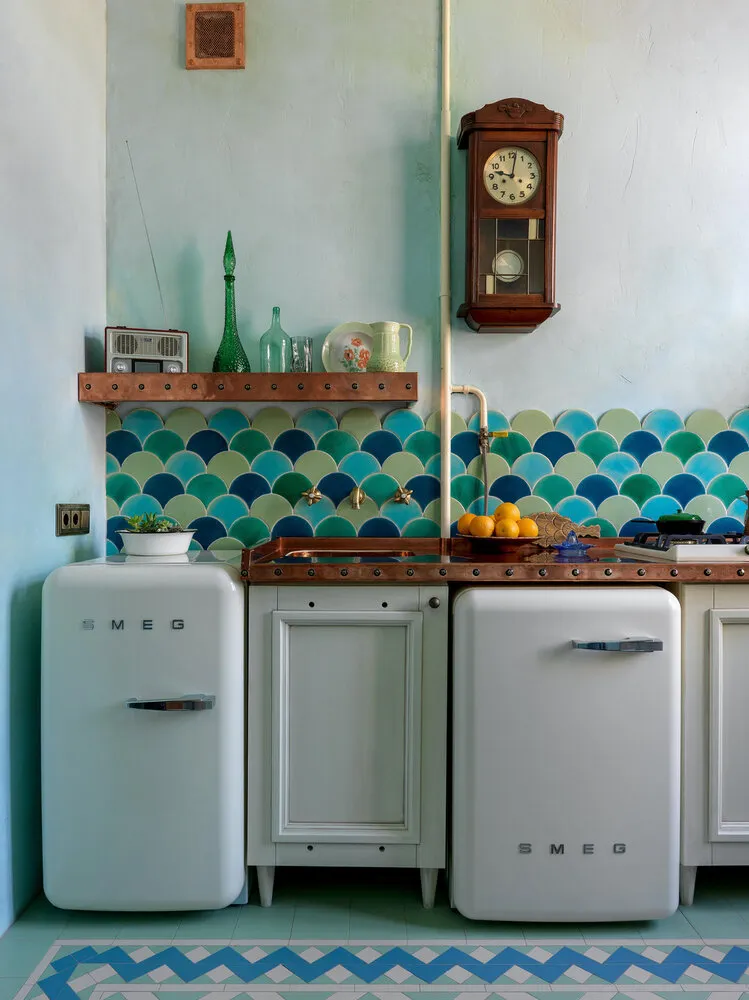 Design: Alena Skvortsova
Design: Alena SkvortsovaThe layout looks impressive when combined with aged furniture, copper elements and vintage appliances. Color transitions create a soft visual rhythm and immediately attract the eye. The tiles look great with natural lighting — tones begin to play, and the kitchen gains a special atmosphere.
 Design: Alena Skvortsova
Design: Alena SkvortsovaVertical Relief Tile
Designer Evgenia Maras'kova-Grigoryants made a bet on relief ceramic tile laid vertically. Thin rectangular elements with expressive texture create a strict rhythm and visually elongate the space upward. Thanks to its noble dark gray color and deep shadows between tiles, the apron adds graphic appeal to the interior.
 Design: Evgenia Maras'kova-Grigoryants
Design: Evgenia Maras'kova-GrigoryantsAn additional plus is that the tile itself is decorative and does not require complex framing or additional decor. Vertical laying is a good way to stand out against the classic horizontal "pig".
 Design: Evgenia Maras'kova-Grigoryants
Design: Evgenia Maras'kova-GrigoryantsApron from Metal
In this eclectic kitchen, designers opted out of the usual tile and decorated the apron from metal — a smooth steel panel that continues on the countertop. The approach looks minimalist, but very expressive, especially in combination with wood and vintage details. Metal reflects light well, expanding the space, while also becoming a neutral background for colorful accents — dishes, greenery, graphics.
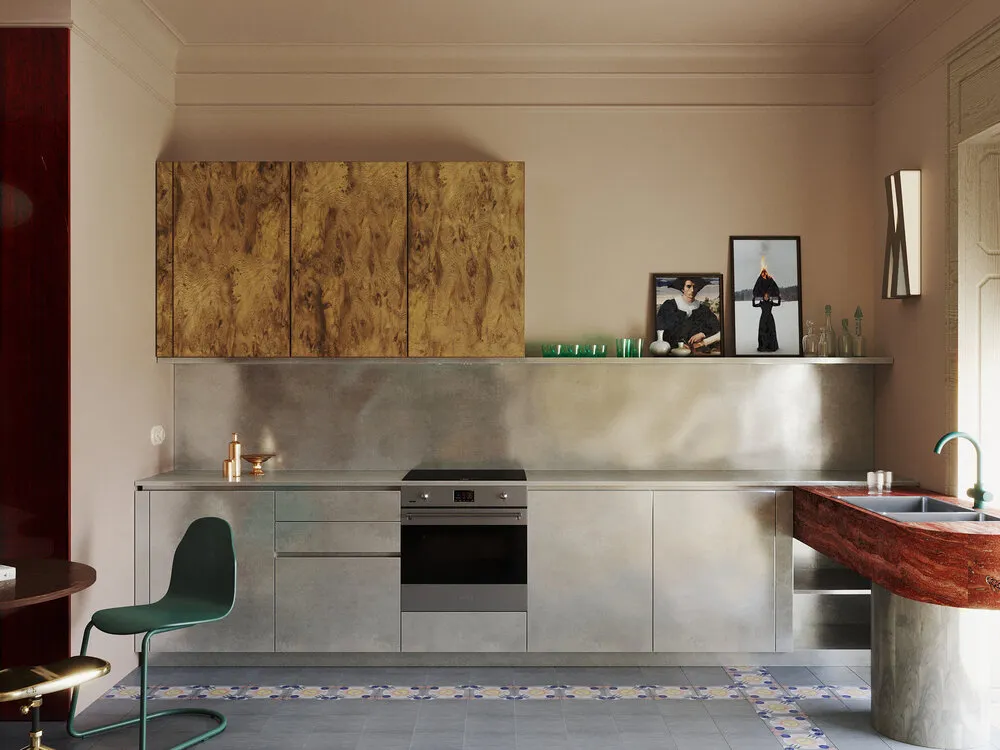 Design: Lake and Walls Studio
Design: Lake and Walls StudioThe apron has no seams, is easy to clean and withstands temperature fluctuations perfectly — an ideal option for those who cook often. In this project, metal also balances different stylistic directions.
 Design: Lake and Walls Studio
Design: Lake and Walls StudioNatural Stone with a Bright Vein
Designers from Arcus Design put the expressive natural pattern in the foreground — the apron is made of a solid sheet of natural stone with a bright vein. Thanks to its complex palette and active graphics, it looks like an artwork.
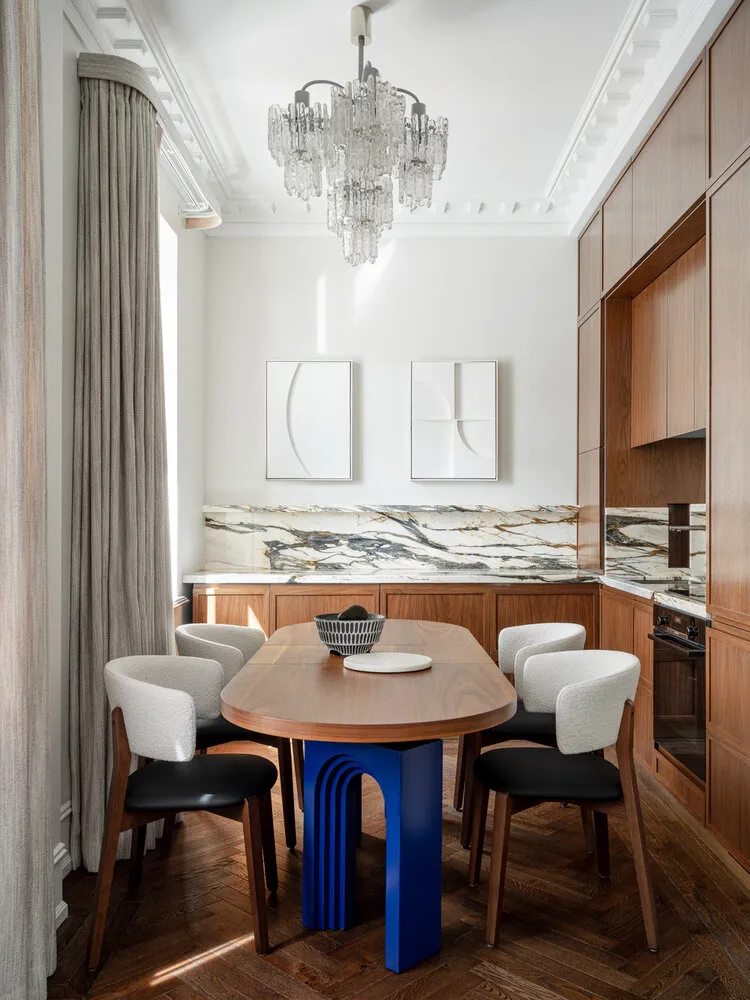 Design: Arcus Design Studio
Design: Arcus Design StudioThe apron transitions into the countertop and creates a unified image, increasing the depth of the kitchen. This solution is suitable for those who value status materials and are not afraid of bold decisions.
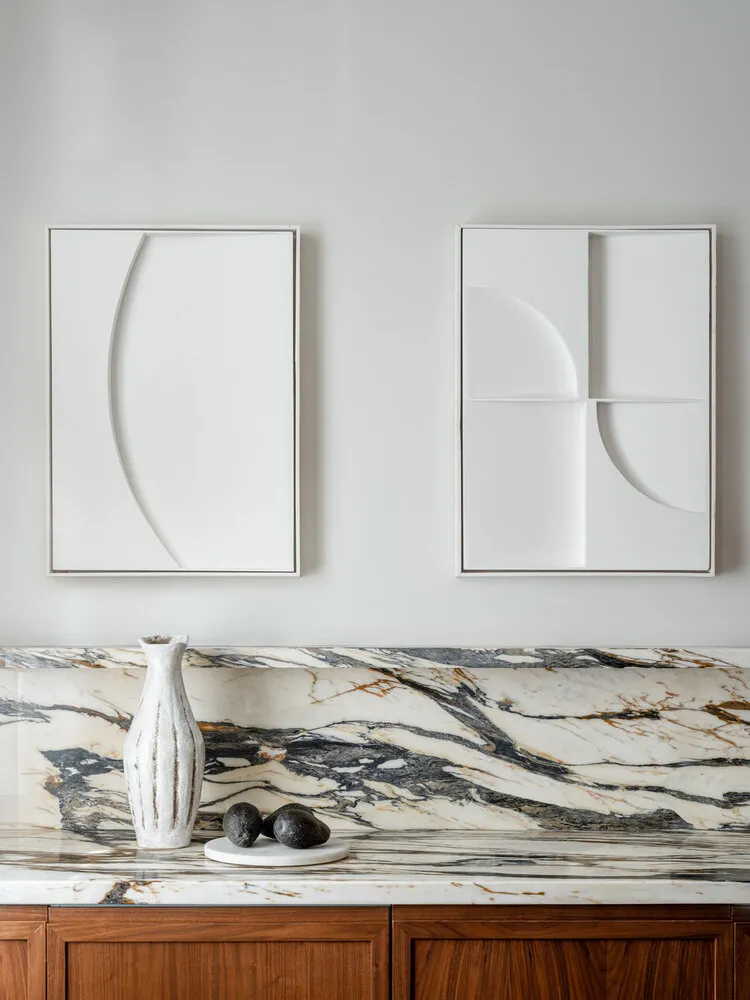 Design: Arcus Design Studio
Design: Arcus Design StudioWooden Apron in Tone with Furniture
Elena Uchayeva rejected classic tile or stone and chose an unconventional approach — a tall wooden apron in harmony with the cabinet fronts. Thanks to the unified texture and color, the kitchen cabinet looks like a monolithic structure, and the apron becomes an extension of the furniture. This approach from European minimalism where material plays the main role and does not require decoration.
 Design: Elena Uchayeva
Design: Elena UchayevaWood adds warmth to the kitchen, especially in combination with soft lighting and an abundance of antiques. It's important to note: for such an apron, you need to choose moisture and temperature-resistant materials or high-quality protective treatment.
 Design: Elena Uchayeva
Design: Elena UchayevaCeramic Apron with Stone Effect
Designer Ksenia Stepchenko used ceramic with an expressive pattern resembling natural stone. The apron looks like a work of art — with living veins, 'cracks' and texture as if created by nature.
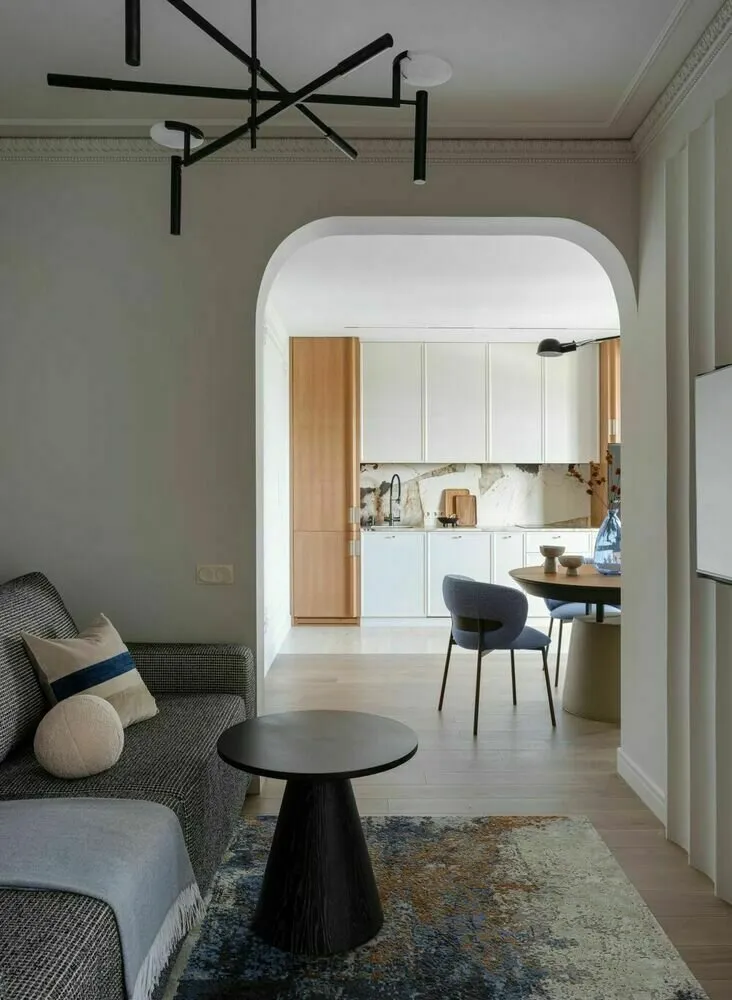 Design: Ksenia Stepchenko
Design: Ksenia StepchenkoA bright yet elegant solution that makes the interior more expensive. The main advantage — practicality as well.
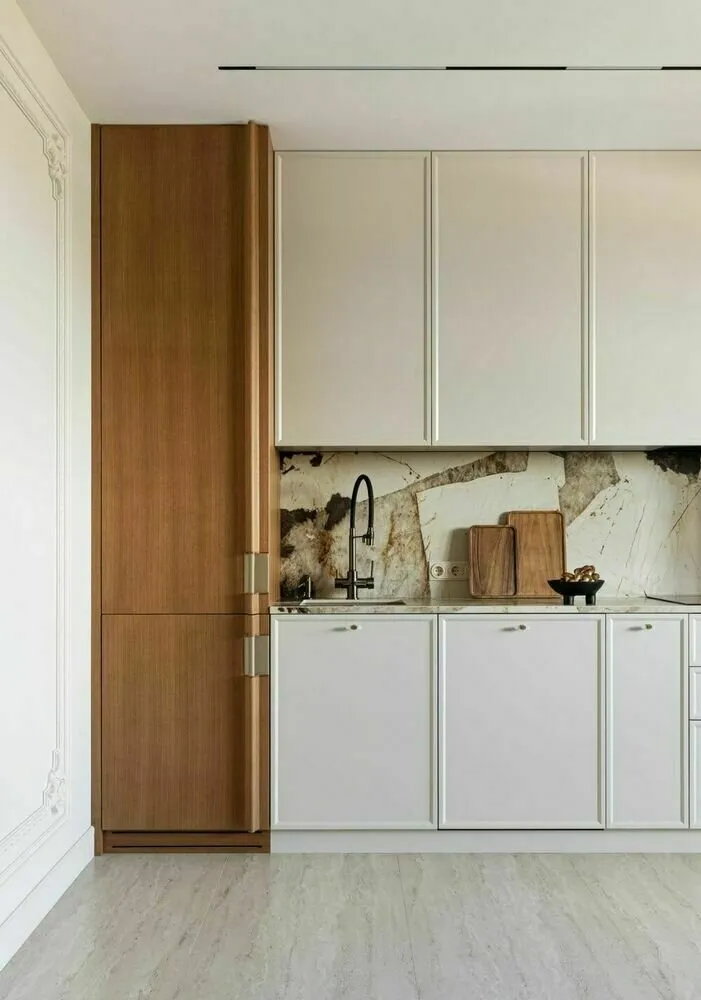 Design: Ksenia Stepchenko
Design: Ksenia StepchenkoUnlike real stone, ceramic is lighter, more accessible and does not require special care. It resists moisture, temperatures, mechanical damage and is easy to clean — an ideal material if you cook a lot.
More articles:
 7 Cool Ideas We Spotted in a Small Stalin-era Apartment
7 Cool Ideas We Spotted in a Small Stalin-era Apartment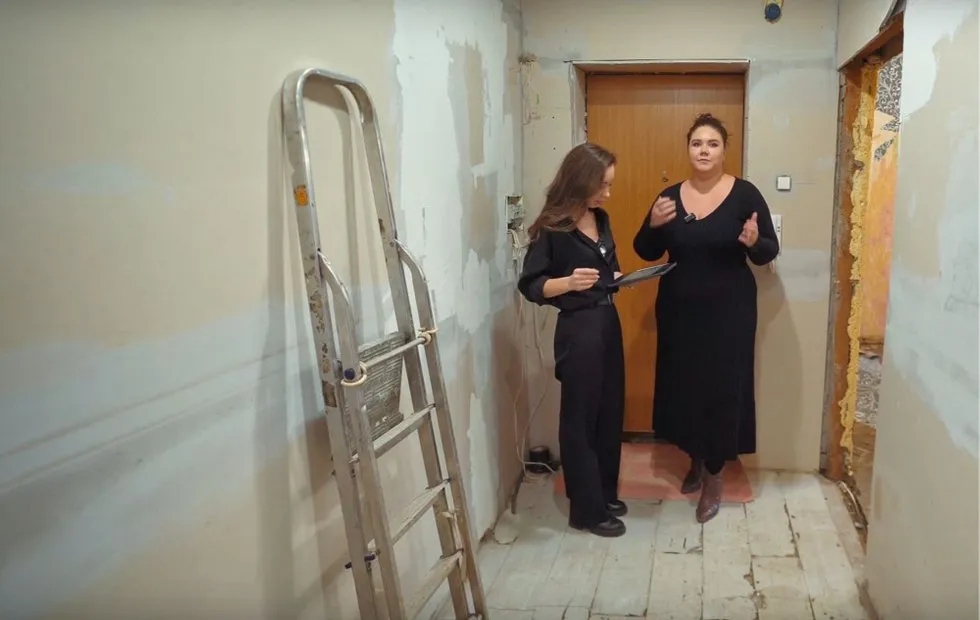 Communication Nightmare: How We Defeated 7 Types of Pipes in a Stalin-era Apartment and Saved 400 Thousand
Communication Nightmare: How We Defeated 7 Types of Pipes in a Stalin-era Apartment and Saved 400 Thousand 5 Bright Designer Solutions for the Kitchen
5 Bright Designer Solutions for the Kitchen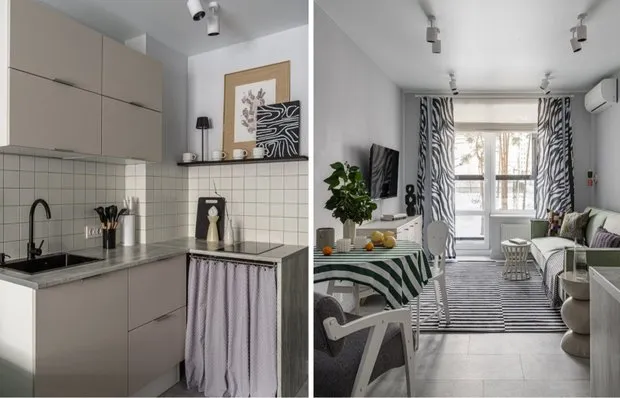 6 Cool Ideas for a Small Apartment, Inspired by a Tiny 20 m² Studio
6 Cool Ideas for a Small Apartment, Inspired by a Tiny 20 m² Studio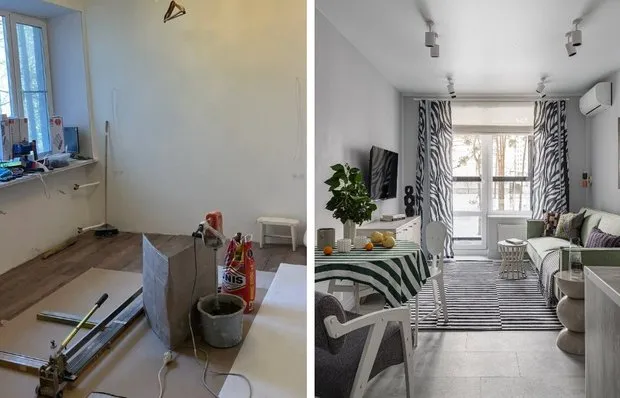 Raw Renovation: Where You Can and Cannot Save Money
Raw Renovation: Where You Can and Cannot Save Money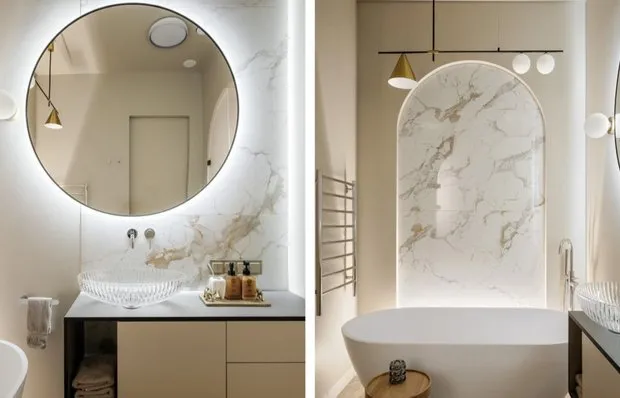 Stunning Bathroom That Can Truly Be Called 'Three-Room'
Stunning Bathroom That Can Truly Be Called 'Three-Room'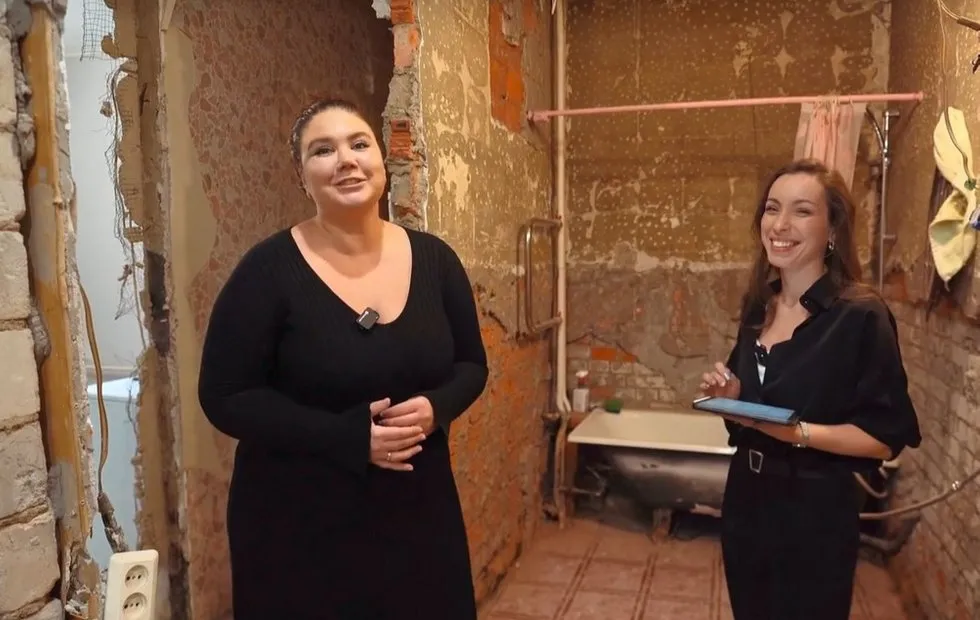 Two Bathrooms Instead of One: How to Maximize Small Spaces
Two Bathrooms Instead of One: How to Maximize Small Spaces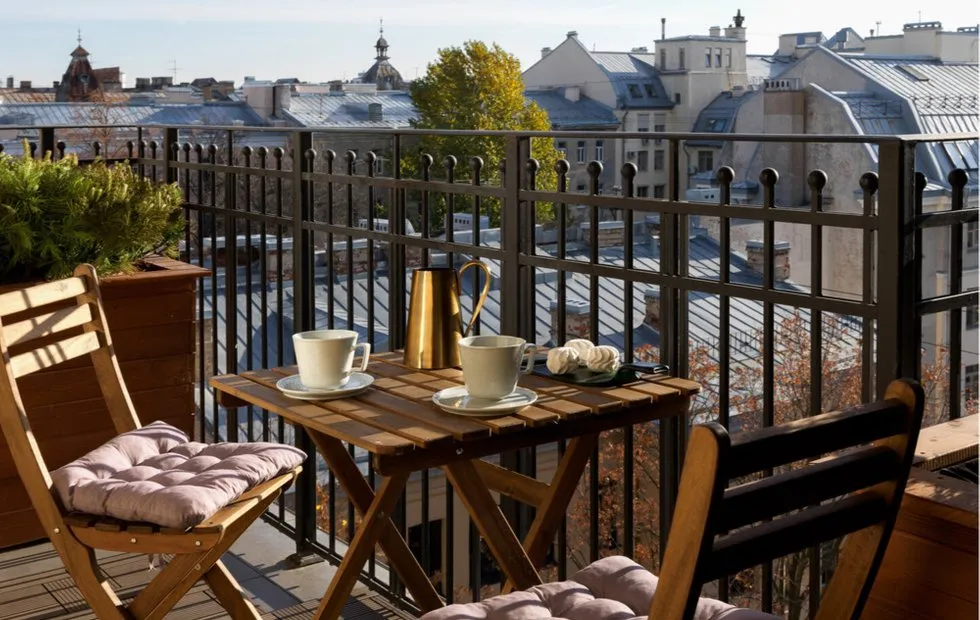 Preparing the Balcony for Summer: Ideas for Comfort and Order
Preparing the Balcony for Summer: Ideas for Comfort and Order